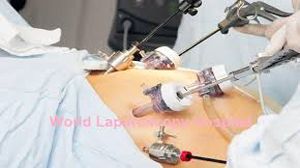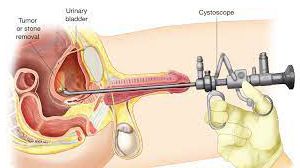Laparoscopic Inguinal Hernia Repair: A Minimally Invasive Approach for Females
Add to
Share
1,496 views
Report
2 years ago
Description
Introduction: Inguinal hernias are a common condition where soft tissue, such as part of the intestine, protrudes through a weak spot in the abdominal muscles. While inguinal hernias affect both men and women, the surgical repair techniques can differ due to anatomical variations. Traditionally, open surgery was the primary approach for inguinal hernia repair in females. However, advancements in surgical techniques have led to the emergence of laparoscopic inguinal hernia repair as a safe and effective minimally invasive alternative. This essay aims to explore the procedure of laparoscopic inguinal hernia repair specifically in females and discuss its advantages over traditional open surgery. Understanding Inguinal Hernias in Females: Inguinal hernias occur when a part of the intestine or other abdominal tissue protrudes through a weak point in the inguinal canal, a passageway in the groin region. Although inguinal hernias are more commonly seen in males, females can also develop this condition. In females, inguinal hernias often involve the protrusion of the intestines or other abdominal tissues into the inguinal canal or labia majora. The symptoms can vary from a visible bulge in the groin to discomfort or pain during physical activity. Laparoscopic Inguinal Hernia Repair in Females: Laparoscopic inguinal hernia repair is a minimally invasive surgical procedure that offers several advantages over open surgery for female patients. The laparoscopic approach involves making small incisions in the abdomen through which a laparoscope and specialized instruments are inserted. The laparoscope provides a magnified view of the surgical area, allowing the surgeon to visualize and repair the hernia using small, precise movements. Procedure and Benefits: During the laparoscopic inguinal hernia repair in females, the surgeon first insufflates the abdomen with carbon dioxide gas to create a working space. The laparoscope is then inserted to visualize the hernia defect. The hernia sac is dissected and reduced back into the abdominal cavity. The weakened abdominal wall is reinforced with a mesh, which is secured in place to provide support and prevent recurrence of the hernia. The benefits of laparoscopic inguinal hernia repair in females are significant. First, the minimally invasive approach results in smaller incisions, leading to less postoperative pain and reduced scarring. Female patients can experience improved cosmetic outcomes and a quicker return to normal activities. Second, the laparoscopic technique allows for better visualization and precise placement of the mesh, ensuring a more accurate repair. Additionally, this approach can address bilateral hernias simultaneously, minimizing the need for multiple surgeries. This topic explores the surgical approach known as laparoscopic inguinal hernia repair specifically in females, highlighting its advantages as a minimally invasive procedure. Inguinal hernias, characterized by the protrusion of abdominal tissue through a weak spot in the groin region, can affect both males and females. Traditionally, open surgery was the standard treatment method for inguinal hernias in females, but laparoscopic repair has emerged as an effective alternative. The description delves into the procedure of laparoscopic inguinal hernia repair, emphasizing its benefits over open surgery. It discusses the use of small incisions, a laparoscope, and specialized instruments to visualize and repair the hernia. The advantages of the laparoscopic approach, such as reduced postoperative pain, improved cosmetic outcomes, and faster recovery, are highlighted, specifically addressing the unique needs of female patients. The description concludes by acknowledging the importance of patient selection, thorough evaluation, and surgical expertise for successful outcomes. Further research and long-term studies are needed to establish the long-term effectiveness and safety of laparoscopic inguinal hernia repair in females. Overall, the description emphasizes laparoscopic inguinal hernia repair as a promising and preferred option for females requiring hernia repair. Conclusion: Laparoscopic inguinal hernia repair represents a significant advancement in the surgical management of inguinal hernias in females. The minimally invasive approach offers numerous advantages, including reduced postoperative pain, improved cosmetic outcomes, and faster recovery. By using small incisions and specialized instruments, surgeons can effectively repair the hernia while minimizing tissue trauma. However, careful patient selection, thorough evaluation, and surgical expertise are crucial for successful outcomes. Further research and long-term studies are necessary to validate the long-term efficacy and safety of laparoscopic inguinal hernia repair in females. Nonetheless, this approach holds great promise as a preferred option for female patients requiring inguinal hernia repair.
Similar Videos






